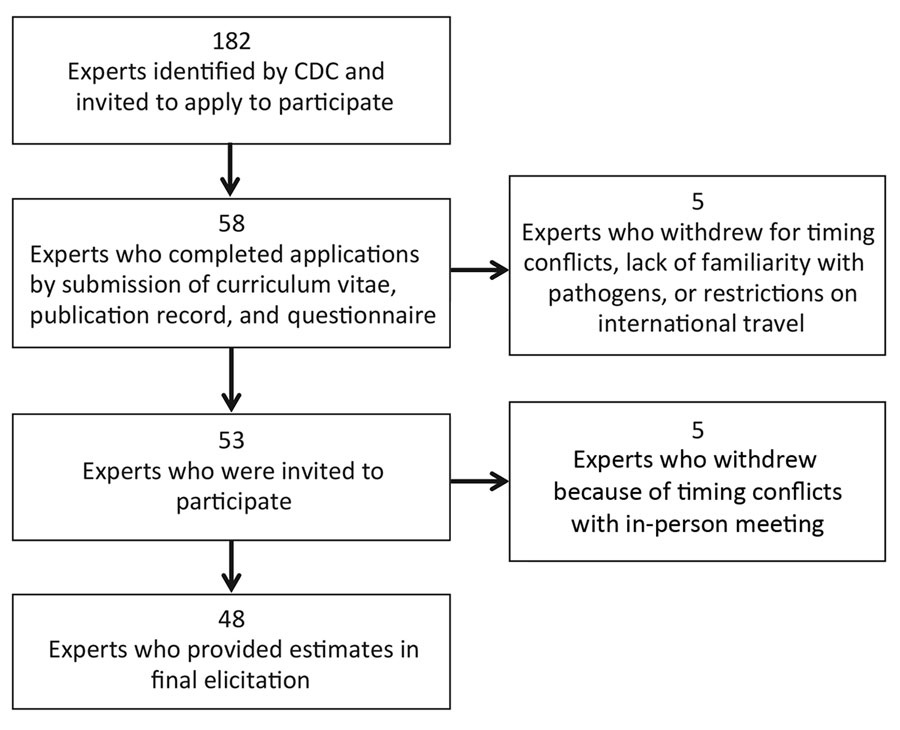Volume 27, Number 1—January 2021
Research
Attribution of Illnesses Transmitted by Food and Water to Comprehensive Transmission Pathways Using Structured Expert Judgment, United States
Figure 1

Figure 1. Expert selection process for study of attribution of illnesses transmitted by food and water to comprehensive transmission pathways using structured expert judgment, United States, 2017.
Page created: October 14, 2020
Page updated: January 27, 2021
Page reviewed: January 27, 2021
The conclusions, findings, and opinions expressed by authors contributing to this journal do not necessarily reflect the official position of the U.S. Department of Health and Human Services, the Public Health Service, the Centers for Disease Control and Prevention, or the authors' affiliated institutions. Use of trade names is for identification only and does not imply endorsement by any of the groups named above.